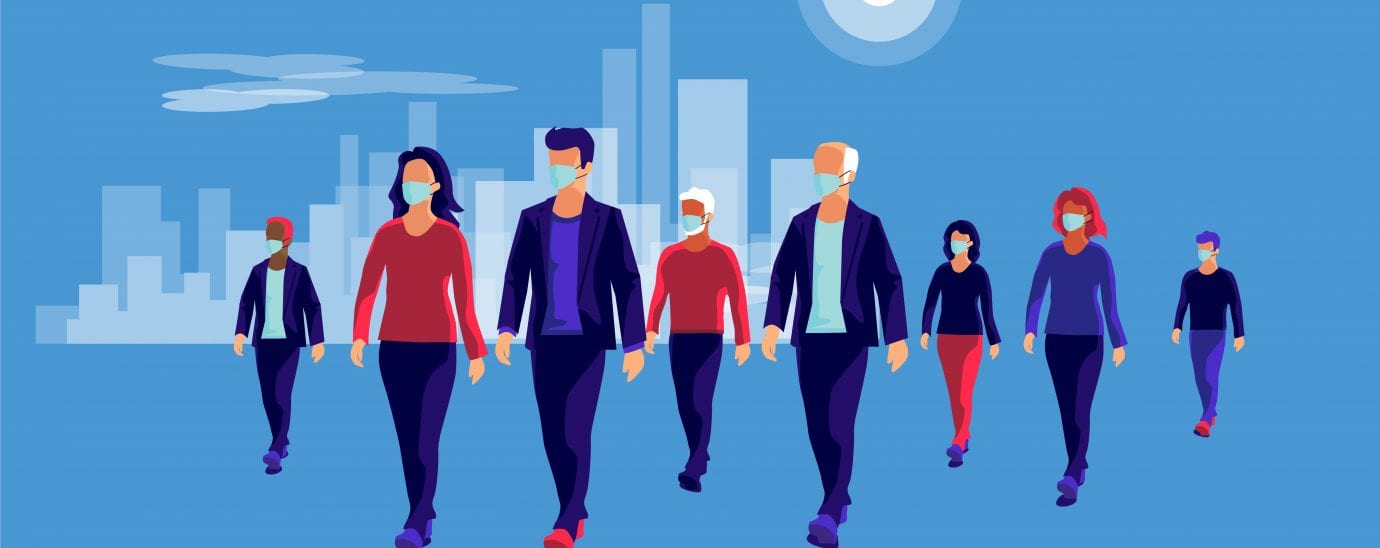Five pieces of tech to invest in as we return to work

Anthony Lamoureux, Chief Executive Officer at Velocity Smart Technology, explores the technology that will assist in protecting workforces as they return to the office in a post-pandemic era.
Throughout history, major crises have acted as catalysts for change, both socially and technologically, and it seems like this pandemic is no different. The various lockdowns forced millions of us into remote working quite literally overnight, accelerating changes towards flexible working and new technology investments.
Ultimately, the transition towards remote workforces has been a lot smoother than expected for businesses, and it is plausible that working from home will eventually become the new normal, with just a couple of days a week spent in office spaces.
But before kissing goodbye to the office completely, let’s see how technology could assist us in transitioning back to office life?
- Covid Security
Foremost in people’s minds when they return to work will be Covid security. Employees need to be able to commute to work safely, and once in the office, they need to feel secure. Essentially this means that offices will need to invest in practical – and visible – methods of improving cleanliness and biosecurity.
These come in many forms – from hands-free automated hand-sanitiser stations and bathroom taps and hand dryers that include UV lights that can help to destroy viruses to more cutting-edge technologies.
For instance, Tharsus, a UK-based robotics company, has developed wearable lanyards that employees can wear around their necks that alert the wearer when they are too close to colleagues, helping them comply with social distancing. Meanwhile, The UK Company ‘Digital Barriers’ is providing Vodafone with temperature screening cameras to provide a non-invasive, discreet and efficient method of detecting individuals with Elevated Body Temperature (EBT), which is a key indicator of Covid 19.
2. Smart Lockers
Smart lockers are another great way to reduce contacts in the office and deliver IT hardware in a high-tech, low-cost, and Covid secure way. By using smart locker systems, it is possible to drop off broken equipment and pick up a loaned replacement in a safe, socially distanced manner. With a distributed network, employees could simply log their IT support request in their support portal; they then receive a unique security code that they can use to redeem their new equipment at their closest hub, saving valuable time, resources and, therefore – money.
A Smart Locker system provides remote IT support – supporting remote workers as well as the office-based workforce. By deploying ITSM integration, which is offered by some smart locker solution providers, such as Velocity, Smart lockers can enable asset quarantine management and also track anyone involved in the chain of drop-off, repair and return. This level of traceability will be crucial in the control and reduction of any future outbreaks.
3. Smart Building
While Smart Lockers are now at a stage of maturity, there are many other nascent areas of ‘smart’ technology that could come to the fore following the pandemic. Smartphones will become ever more essential to daily life, as ‘smart buildings’ will use Bluetooth to determine ventilation levels based on the overall number of people and their whereabouts in the building.
Likewise, smartphone apps could be used to open doors, to call elevators, and even to create and manage virtual queues – preventing people from clustering together in large groups when waiting in the lunch-line or for the bathroom.
4. Cloud Collaboration Software
Having become some of the central business tools for remote working in the pandemic, few expect our cloud collaboration tools to simply disappear once we return to the office.
Zoom, Slack, Teams, GoogleDocs, and all the rest will all still have a place in the post-Covid workplace and will continue to help in reducing the number of contacts and congregations that are required in each working day. Indeed, large meetings in the boardroom may remain a thing of the past, in favour of zoom calls – even between people in the same office.
5. Commuting
The last factor to consider is not at work – but actually the mode of transport for getting to work. While there are various ways listed above that offices can be made more covid secure, in ways that give employees a feeling of confidence and security – it is hard to feel the same way about overcrowded trains, tubes and buses.
Rush-hour travel to the office remains a major obstacle to a contented workforce in a secure environment. With this in mind, businesses should consider supporting their employees in pursuing alternative means of transport – such as walking, running, cycling, or using an electric scooter.
‘Cycle to Work’ schemes can help employees to purchase a bike, spreading the cost through their pay packet – but there is also office infrastructure that can help, such as providing pleasant shower and changing facilities at the office, and also secure locations for locking and storing scooters, with recharging points for electric bikes and scooters.
READ MORE:
- After 25 years, Microsoft will retire Internet Explorer in 2022
- ServiceNow delivers new security integrations with Microsoft
- Microsoft and Darktrace join forces to provide self-learning AI cybersecurity to users
- What can corporates learn from digital transformation in the COVID era?
Covid-19 is likely to accelerate the adoption of new technology, as people find new ways to make their personal and working lives better. The settled thinking that acted as an invisible constraint on innovation has been swept away by the pandemic, leading to a huge raft of technological, social and corporate changes that are now coming into focus as we emerge from the present crisis. As we embrace a period of growth and recovery, the challenge will be to find and nurture the best products and practices that can help us transition into a more productive and balanced future.
For more news from Top Business Tech, don’t forget to subscribe to our daily bulletin!
